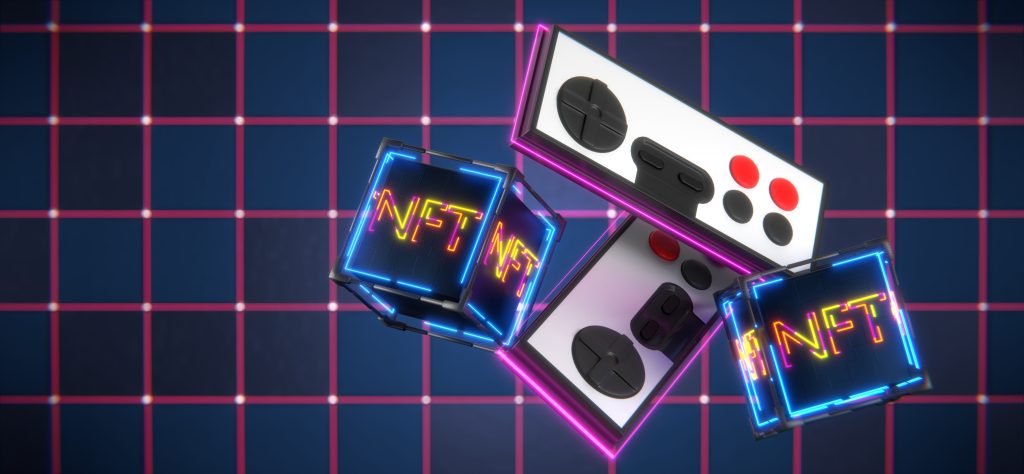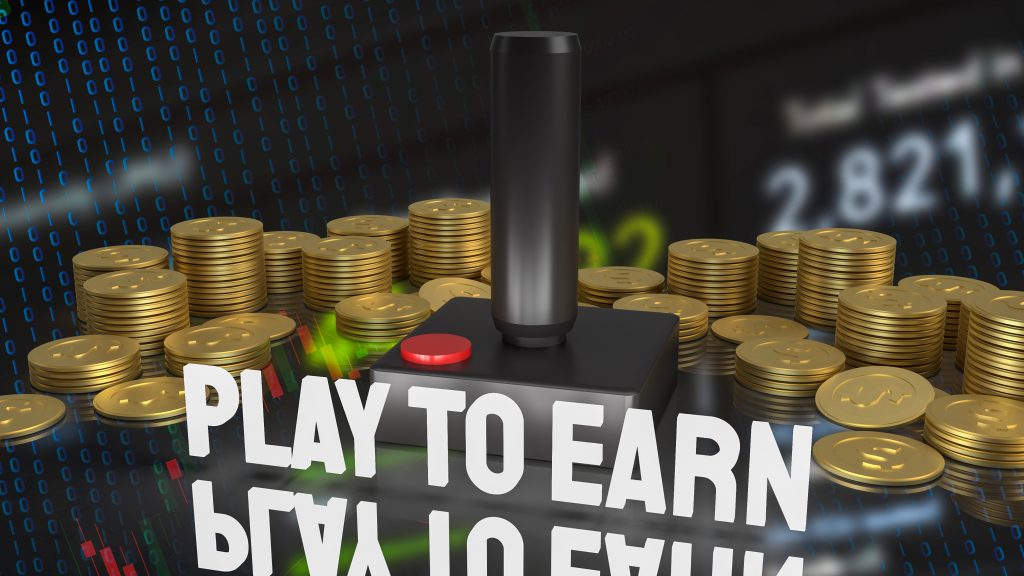Welcome to the thrilling and ever-evolving world of play-to-earn gaming! 🎮 As blockchain technology continues to break barriers and reshape various industries, the gaming industry is no exception. Play-to-earn games have gained massive popularity among gamers looking to capitalize on their gaming skills and earn real-world value. This article will provide a comprehensive analysis of this innovative business model, discussing its benefits, drawbacks, and the future of gaming monetization. So, whether you’re a play-to-earn enthusiast or just curious, sit back, relax, and let’s uncover the secrets behind this gaming revolution.
Evolution of Gaming Monetization Models


Gaming monetization models have come a long way from the early days of coin-operated arcade games and paid game software. Over the years, we’ve seen the rise of subscription-based services, in-app purchases, and ad-supported freemium games. These models have sought to balance profitability for developers and publishers with enjoyable experiences for players. However, they’ve also faced criticism for their aggressive monetization strategies and potential negative impact on game design.
The introduction of blockchain technology and cryptocurrencies has given rise to a new gaming monetization model: play-to-earn. This model empowers players by allowing them to earn real-world value from their in-game accomplishments. It also benefits developers by creating strong, engaged communities and new revenue streams. The play-to-earn model represents a significant shift in the gaming landscape, as it challenges traditional notions of value creation and distribution in the industry.
As we explore the play-to-earn business model further, we’ll delve into its core components, such as earning in-game currency, trading virtual goods, and participating in decentralized gaming ecosystems. We’ll also examine the mechanics of popular play-to-earn games and platforms, highlighting their innovative use of blockchain technology and cryptocurrencies. Finally, we’ll discuss the potential future developments of play-to-earn gaming, as well as the challenges and risks associated with this new frontier in gaming monetization.
So, join us on this exciting journey as we demystify the play-to-earn gaming phenomenon and explore its potential to reshape the gaming industry for the better.
The Play-to-Earn Game Model: An Overview


The play-to-earn model flips the script on traditional gaming monetization by empowering players to earn real-world value from their gaming activities. In this new gaming paradigm, players can accumulate in-game currencies, trade virtual goods, and participate in decentralized gaming ecosystems. It’s like turning your gaming passion into a side gig, where your skills and time investment are rewarded with tangible assets.
The secret sauce behind the play-to-earn model is blockchain technology, which allows for secure, transparent, and decentralized transactions. This enables the creation of unique digital assets, such as non-fungible tokens (NFTs), that can be traded and exchanged for real-world value. In essence, play-to-earn games create vibrant, player-driven economies where users can generate, trade, and monetize their in-game assets.
How does the Play-to-Earn Model Function
The play-to-earn model relies heavily on blockchain technology and cryptocurrencies to enable its unique value proposition. Blockchain technology provides the backbone for secure, transparent, and tamper-proof transactions, while cryptocurrencies facilitate the exchange of value between players and the wider gaming ecosystem.
In play-to-earn games, players can earn in-game currencies or tokens, which are often represented as cryptocurrencies, by participating in quests, challenges, or tournaments. These tokens can then be traded for other in-game assets, such as NFTs, which represent unique and rare items, characters, or even virtual land. The value of these assets is determined by their scarcity and utility within the game, as well as the overall demand from other players.
Furthermore, as players accumulate in-game assets, they can choose to trade them on decentralized marketplaces for other cryptocurrencies or even fiat currencies, effectively converting their in-game earnings into real-world value. This dynamic creates a strong incentive for players to invest time and effort into play-to-earn games, driving engagement and fostering vibrant, player-driven economies.
Some play-to-earn games also leverage decentralized finance (DeFi) protocols, allowing players to stake their in-game tokens and earn passive income or participate in governance decisions, further blurring the lines between gaming and finance.
The play-to-earn model has the potential to disrupt the gaming industry, as it redefines the relationship between players and developers, shifting the focus from pure entertainment to value creation and distribution.
Earning In-Game Currency


In play-to-earn games, accumulating in-game currency is the name of the game. Players can earn these valuable tokens in various ways, depending on the specific game’s mechanics and economy. Here are a few common methods for earning in-game currency in play-to-earn games:
- Completing quests and challenges: Most play-to-earn games offer quests, challenges, or missions that players can complete to earn in-game currency. These tasks often require strategy, skill, or teamwork, making the gameplay engaging and rewarding.
- Trading NFTs: Non-fungible tokens (NFTs) represent unique and scarce in-game assets, such as characters, items, or virtual land. Players can earn in-game currency by trading NFTs with other players, capitalizing on their rarity, utility, or aesthetic appeal.
- Staking tokens in DeFi protocols: Some play-to-earn games integrate decentralized finance (DeFi) protocols, allowing players to stake their in-game tokens to earn passive income. This can create additional revenue streams for players and encourage long-term investment in the game’s ecosystem.
- Participating in tournaments and events: Play-to-earn games often host tournaments, competitions, or special events where players can compete for in-game currency or other valuable prizes. These events can foster a sense of community and excitement, driving engagement and retention.
Popular Play-to-Earn Games and Platforms
The play-to-earn model has attracted a growing number of developers and platforms, each offering unique gameplay experiences and value propositions. Here are some notable examples of popular play-to-earn games and platforms:
‣ Axie Infinity
This Pokémon-inspired game allows players to breed, battle, and trade adorable creatures called Axies. Players can earn in-game currency (Smooth Love Potion) by participating in battles and quests, and trade their Axies as NFTs on the marketplace.
‣ Decentraland
As a virtual world built on the Ethereum blockchain, Decentraland allows players to own, create, and monetize virtual land and assets. Users can earn the native cryptocurrency (MANA) by participating in events, creating content, or trading assets on the marketplace.
‣ The Sandbox
Moving on, this is a user-generated gaming platform that enables players to create, share, and monetize virtual worlds and assets. The native cryptocurrency (SAND) can be earned by participating in events, creating content, or trading NFTs on the platform.
‣ Immutable X
As a layer-2 scaling solution for Ethereum, Immutable X focuses on NFTs and gaming. The platform hosts various play-to-earn games, such as Gods Unchained and Immutable X’s own game, Immutable X Arena, where players can earn cryptocurrency and trade NFTs.
‣ Dragonary
In this fantasy-themed play-to-earn game, players can breed, battle, and trade dragons as NFTs. Players can earn the in-game currency (CYT) by HODLing NFT Dragons and participating in battles, quests, and events. Also, you can acquire Coinary Tokens (CYT) and use it to upgrade their dragons or trade for other assets.
These games and platforms showcase the potential of the play-to-earn model to revolutionize the gaming industry, empowering players to create value and earn real-world assets through their gaming experiences.
The Benefits of Play-to-Earn Crypto Games


The play-to-earn model with NFT’s and crypto games offers numerous benefits for gamers, developers, and the broader gaming industry. Here are some key advantages of play-to-earn crypto games:
- Democratization of wealth in gaming: By enabling players to earn real-world value from their in-game activities, play-to-earn games can democratize wealth distribution in the gaming industry, creating new opportunities for gamers to monetize their skills and time.
- Increased player engagement:The potential to earn real-world assets incentivizes players to invest more time and effort into the game, driving higher engagement and retention rates.
- Empowerment of player creativity: Play-to-earn games often provide tools and platforms for players to create, share, and monetize their own in-game content, empowering player creativity and fostering vibrant gaming communities.
- Integration of blockchain technology: By leveraging blockchain technology, play-to-earn games can offer secure, transparent, and decentralized gaming ecosystems, where players can trust the rules and systems that govern the game’s economy.
- Cross-game interoperability: The use of NFTs and other blockchain-based assets can enable cross-game interoperability, allowing players to use their digital assets across multiple games and platforms.
Types of Play-to-Earn Games
Play-to-earn games can be found across various gaming genres, each incorporating the play-to-earn model in unique ways. Here are some examples of different types of play-to-earn games:
- Strategy games: In these games, players need to employ strategic thinking and planning to achieve their objectives. They can earn in-game currency by winning battles, completing missions, or optimizing their resources.
- Virtual worlds:These immersive environments allow players to explore, socialize, and create within a digital landscape. Players can earn in-game currency by participating in events, creating content, or trading virtual assets, such as land or items.
- Collectible card games: These games revolve around building decks of cards with unique abilities and attributes. Players can earn in-game currency by winning matches, completing quests, or trading rare cards with other players.
- Idle and clicker games: These games often involve simple mechanics, such as clicking or tapping, and reward players with in-game currency for their time and effort. The play-to-earn model can be incorporated by allowing players to trade their earnings for real-world value.
- Puzzle and trivia games: In these games, players solve puzzles or answer trivia questions to progress through levels or challenges. The play-to-earn model can be incorporated by rewarding players with in-game currency based on their performance, which can then be traded for real-world assets.
Challenges and Potential Drawbacks of the Play-to-Earn Model
While play-to-earn crypto games present exciting opportunities, they also face several challenges and potential drawbacks. Here are some of the main issues to consider:
- Market volatility: The value of in-game assets and currencies can be subject to significant fluctuations due to the volatile nature of cryptocurrencies. This could affect players’ earnings and the overall stability of the game’s economy.
- Regulatory uncertainty:As play-to-earn games often involve real-world value transfers and the use of cryptocurrencies, they may be subject to evolving regulatory frameworks, which could create challenges for both developers and players.
- Scalability issues: The use of blockchain technology in play-to-earn games can lead to scalability issues, as many current blockchain platforms struggle to handle high transaction volumes. In other words, this could result in slow transaction times and increased costs for players and developers.
- Potential for exploitation: The play-to-earn model may be vulnerable to exploitation by bad actors, such as bot farmers or hackers, who could manipulate the game’s economy for personal gain at the expense of other players.
- Focus on earning rather than entertainment: The allure of earning real-world value from playing games could lead some players to prioritize profit over entertainment, potentially diluting the overall gaming experience.
- Barrier to entry: Play-to-earn games may require upfront investments, such as purchasing NFTs or in-game assets, which could create barriers to entry for some players and limit the growth of the gaming community.
Despite these challenges and potential drawbacks, play-to-earn games continue to gain momentum, as developers and players explore innovative solutions to address these issues. By staying aware of potential risks and working to create balanced and sustainable gaming ecosystems, play-to-earn games have the potential to reshape the gaming industry for the better.
The Future of Play-to-Earn Gaming


As the play-to-earn model gains traction, the gaming landscape is set to undergo a massive transformation that will redefine the way we interact with and experience games. The future is nothing short of exciting, with a plethora of innovations on the horizon, all aimed at enriching the gaming experience while empowering players like never before.
In fact, one of the most anticipated developments is the integration of virtual reality (VR) into play-to-earn games. Imagine fully immersive experiences where players can earn real-world value while exploring and interacting with virtual environments. This fusion of cutting-edge technology and the play-to-earn model will push the boundaries of what’s possible in gaming.
Likewise, the gaming industry will continue to evolve, adapting its monetization models to accommodate the growing demand for play-to-earn opportunities. Players will have more control over their gaming experiences, reaping the rewards of their dedication and skill.
Another thrilling prospect is the cross-platform integration of play-to-earn games. Players could use their in-game assets and earnings across multiple games and virtual worlds, creating a seamless and interconnected gaming universe.
The future of play-to-earn gaming is bursting with potential, and as it continues to evolve and gain mainstream acceptance, it will undoubtedly reshape the gaming industry. So buckle up, gamers, because we’re about to embark on an exhilarating journey where new opportunities for both players and developers await!
Recap
Play-to-earn games have the potential to revolutionize the gaming industry by empowering players to earn real-world value from their in-game accomplishments. This new model has already gained traction with popular games like Axie Infinity and Decentraland, and its future looks promising as more developers explore its potential.
However, challenges such as market volatility, regulatory uncertainty, and potential exploitation must be addressed to ensure a sustainable and enjoyable gaming experience for all. As the play-to-earn model continues to evolve and gain mainstream acceptance, we can expect exciting developments that will reshape the gaming industry and create new opportunities for gamers and developers alike.









